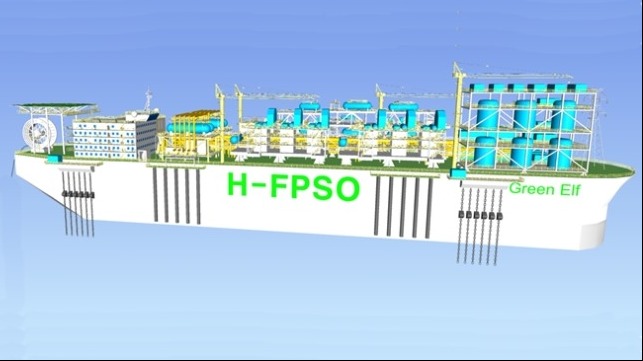Korean Design for Hydrogen Producing FPSO

In a first-of-its-kind design, a consortium of Korean research institutions working with shipbuilder Daewoo Shipbuilding & Marine Engineering (DSME) is proposing using the FPSO design to create a floating offshore plant using wind power to produce hydrogen. The consortium hopes to launch a 1 MW pilot project by next year and have a full-scale unit by 2030.
Led by the Korea Maritime & Ocean University (KOMU) and the classification society Korean Register is currently undertaking studies for the development of what they are calling the Hydrogen FPSO. They note that the concept of FPSO has worked successfully for many years in the oil and LNG sectors and they believe it can present a strong solution for the production of hydrogen using only water and renewable energy.
In announcing their project, the organizations said that the floating hydrogen production offshore plant (Hydrogen FPSO) is emerging as a realistic alternative to realize carbon neutrality because it can relieve the anxiety about hydrogen gas because it produces hydrogen gas far from the land.
President Doh Doe-hee of KMOU said, "In the future, we plan to conduct research, development, and demonstration of a floating hydrogen production offshore plant (Hydrogen FPSO) using our university's patented floating nuclear power system."
KOMU regards the Hydrogen FPSO as an optimal solution for South Korea to achieve energy independence while also developing export-related technologies. In the short term, the consortium notes that South Korea will need to import hydrogen for domestic use and industries such as shipping, but from a long-term perspective they believe it is necessary to establish energy self-sufficiency. They believe the Hydrogen FPSO can safely produce a large amount of green hydrogen.
Similar to other projects in Europe that have been looking at offshore production of hydrogen, the Korean proposal would link to the planned offshore wind farms. The goal is to have a gigawatt-class plant for demonstration by 2030.
